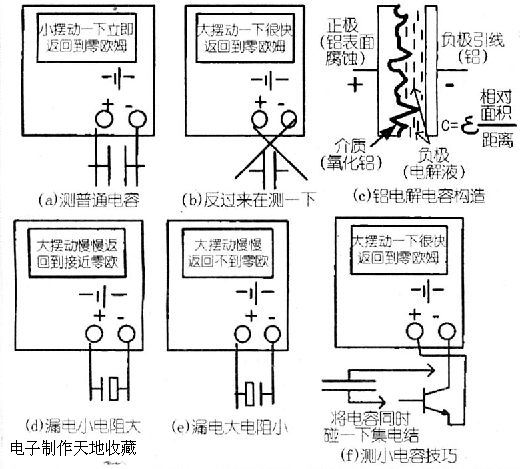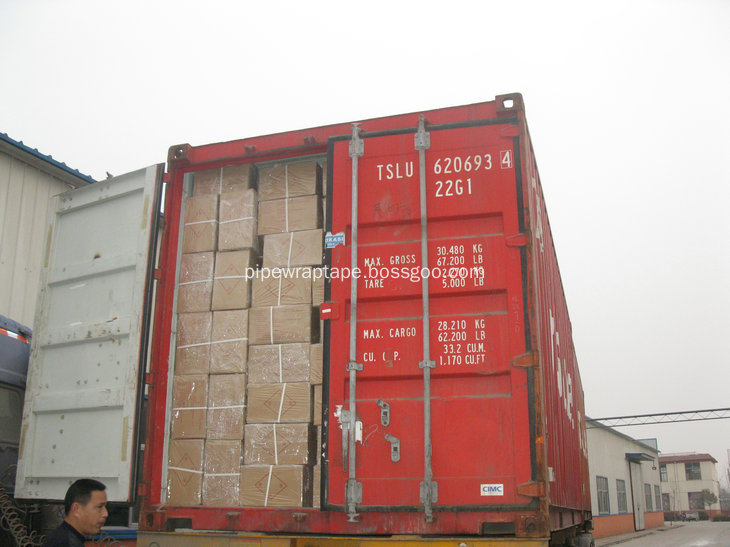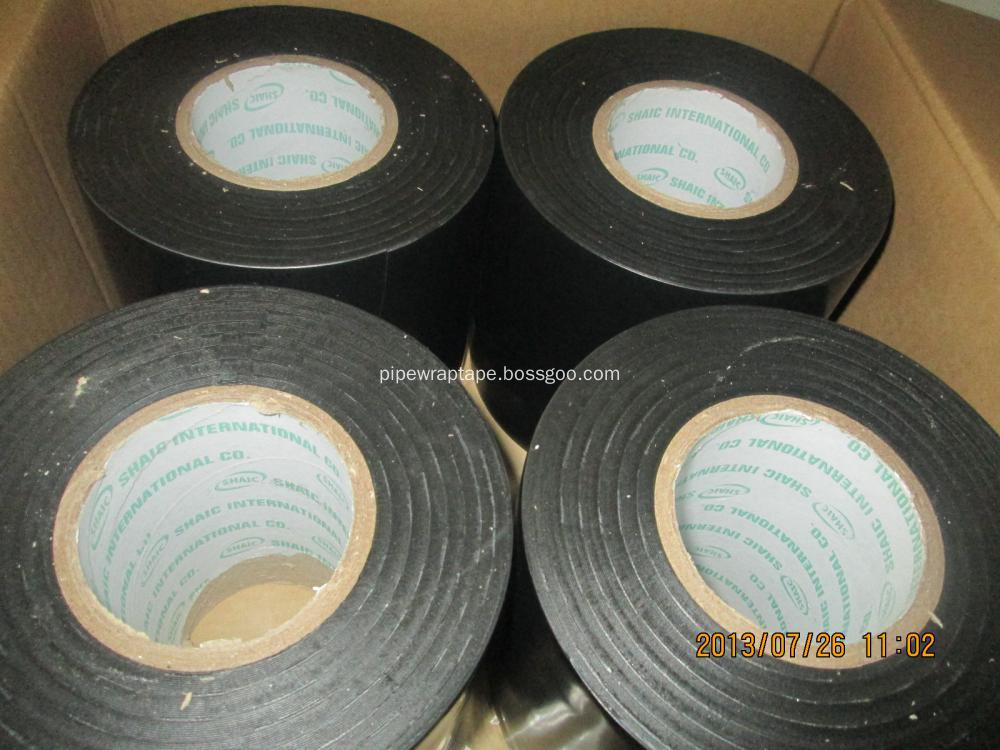The pointer type multimeter can be used to detect the capacitance. The electric resistance of the multimeter is equivalent to the DC power supply with internal resistance, and the capacitor can be charged. Over time, the voltage across the capacitor gradually rises, and the charging current gradually decreases until zero.
Steps
1. Select the appropriate gear for the electrical block. The general capacity is 0.01uF or less, select x10k block; 1~10uF or so, select X1k block; above 47uF, select x100 block or x10 block.
2. For each measurement, short-circuit the capacitor with a wire and discharge it for the next test.
3. The electrolytic capacitor has polarity, and the positive electrode is higher than the negative electrode potential when used. Since the black pen is connected to the positive electrode of the battery, the black pen is connected to the positive electrode of the electrolytic capacitor, and the red pen is connected to the negative electrode. At this time, the leakage of the electrolysis is small, and the reverse connection is large. The good capacitance performance is that the pointer is deflected-down when it is detected, and then gradually returns to the position of mechanical zero (that is, the resistance infinity). The amount of deflection of the pointer is related to the capacitance and the electrical blocking position, and the large amount of deflection is large. Pay attention to the law and accumulate data in practice. The adjustment method of the mechanical zero of the meter head is that when the test probe is neither short-circuited nor measured, the mechanical zero-adjustment gap on the meter head is aligned with a one-word screwdriver, and the needle is turned to the left and right. The performance of the capacitor that loses capacity is that the detection pointer is not deflected, no discharge is required, and the test pen is quickly exchanged, and the pointer is not deflected. The performance of a capacitor that loses part of its capacity is that, compared with a standard capacitor, the pointer is not deflected. It can be judged by experience or by reference to a standard capacitor of the same capacity according to the maximum amplitude of the pointer swing. The reference capacitor does not have to have the same withstand voltage. As long as the capacity is the same, for example, to estimate a 100uF/250V capacitor, a 100uF/25V capacitor can be used as a reference. As long as they have the same maximum amplitude of the pointer, the same capacity can be determined. . The performance of the leakage capacitor is that the pointer does not return to the position of mechanical zero (that is, the resistance is infinite). It should be noted that there are leakage currents in the electrolytic capacitors, large and small leakage currents, and high leakage current with low voltage resistance. The leakage current is high with x10k, and the leakage is small with x1k or less to determine whether the capacitor is leaking. For capacitors above 1000uF, it can be quickly charged with Rx10, and the capacitance is estimated. Then change to Rx1k and continue to measure for a while. At this time, the pointer should not return, but should stop at or very close to infinity, otherwise There may be leakage. For some capacitors below tens of microfarads, after the Rx1k block is fully charged, the Rx10k block is used to continue the measurement. The same pin should stop at infinity without returning. In addition to electrolytic capacitors, porcelain, polyester, metallized paper, and monolithic capacitors are more than 40V. Test with a multimeter, no matter which gear, good capacitors should not leak. To measure the small-capacity capacitor with a multimeter, the amplification of the low-power silicon NPN transistor can be utilized. See Figure 1(f) for the method. Use the resistor Rx1k block, the black pen to the collector, the red pen to the emitter, the small capacitor to the collector, the pointer should be deflected. The principle is that when the capacitor is charged, the charging current injects the base current into the base. This current is amplified by the triode, and the pointer deflection is more obvious.
(c) in the drawing is an aluminum electrolytic capacitor structure, which has strict requirements on the polarity of use. It can be seen from the formula in the figure that the capacity of the plate capacitor is proportional to the dielectric constant of the medium. It is proportional to the relative area of ​​the plate and inversely proportional to the distance between the plates. The positive electrode is an aluminum foil. In order to enlarge the area, the inner surface of the aluminum foil is corroded to a high and low level. The medium is an insulator alumina, which is very thin, the negative electrode is an electrolyte, and the aluminum foil on the right side serves as a negative electrode lead. When used correctly, the positive electrode is connected to a high potential, and the negative electrode is connected to a low potential. Under the action of direct current, the electrolyte can decompose oxygen atoms and form aluminum oxide with the positive aluminum foil to maintain insulation. When it is not used correctly, the positive pole is connected to a low potential, and the negative pole is connected to a high potential. Under the action of direct current, the electrolyte will corrode alumina, destroy insulation, light leakage, severe heat generation, and even burst. Therefore, the use must pay attention to the polarity, long-term need not be constantly energized and aging.

Waterproofing tapes
The XUNDA-T 500 Waterproofing tapes series is cold applied tape for both metallic pipelines and waterproofing works against outdoor bad weathers .
The PP bitumen tape shall be applied after the Liquid adhesive by hand or with a wrapping machine.
Structures
The specification of the tape consists of three layers,
Adhesive layer: Butyl rubber Bituminous Compound
Backing : PP woven fabric cloth
Interleaf:Adhesive Film Treated with Silicone
Features
_ Cold applied
_ Excellent self adhesion to pipe
_ Flexibility provides extra protection at vulnerable areas
_ Excellent conformability and consistent uniform thickness
_ Easily applied with no special equipment
_ Compatible with common pipe coatings
_ Excellent resistance to cathodic disbonding
Physical Properties:Tensile strength and so on , please send email to us


Clear Waterproof Tape, Waterproof Adhesive Tape, Double Sided Waterproof Tape, Water Proof Tape
Jining Xunda Pipe Coating Materials Co.,Ltd , https://www.pipe-wrap.com